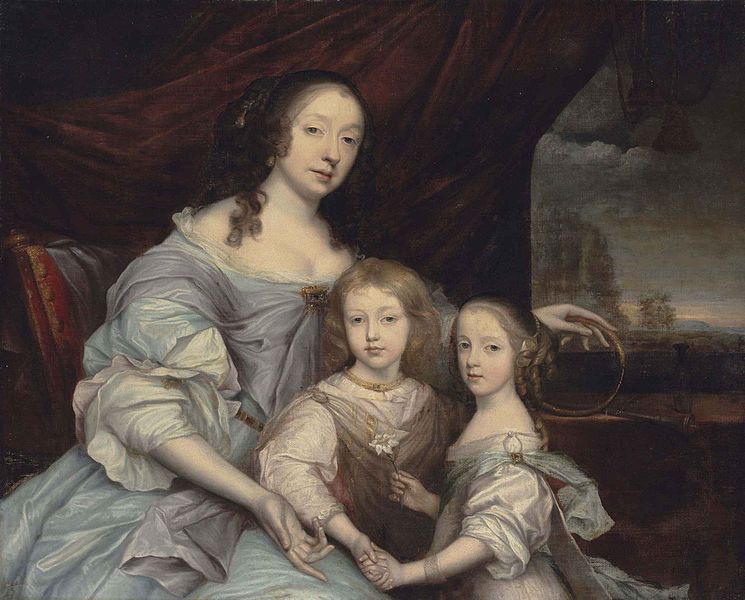 |
| Mary, Duchess of Richmond |
The Enemy Within
Rupert
was feared and the Parliamentarians found him odious; they made good use of PR,
with leaflets circulating cataloguing his crimes. They painted him as sexually
incontinent and accused him repeatedly of having a love affair with Mary[i], Duchess of Richmond,
the wife of his closest friend[ii]. Mary
and her husband James
were Rupert’s staunch supporters at court, protecting him against the
infighting of less favoured of Charles’ courtiers.
As
the war progressed Rupert found it ever more difficult to fight for a cause
wherein he found so many of the protagonists unsympathetic. Rupert loathed men
like Digby, Wilmot and Goring and he found himself
opposing the queen’s rigid sense of right and wrong.
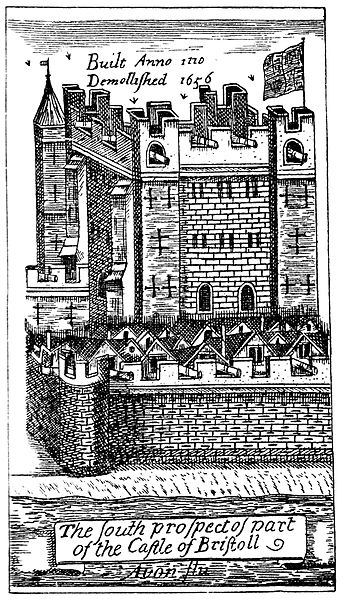 |
| Bristol Castle |
Three
Parliamentarian peers, the earls of Bedford, Clare and Holland, came to Oxford to beg
forgiveness from Charles for fighting against him. Henrietta Maria told her
husband to send the men back to the Parliamentarians; there should be no pardon
for those who dared to rise up against their monarch.
Rupert
was more pragmatic; pardoning the three men would reduce the numbers supporting
the enemy and hopefully induce more men to cross the divide. Charles agreed
with his nephew and pardoned the earls, upsetting his wife. Rupert had used up
most of his goodwill with the royal couple; Charles was very reliant on
Henrietta Maria who was not a fan of Rupert’s.
Following
the fall of Bristol Rupert was awarded the governorship of the city. His
enemies within the Royalist camp backed the Marquess of Hertford’s
recommendation to give Sir Ralph Hopton the prize in return for his three
victories. Charles was in a quandary, writing to Hopton;
‘We too much
esteem our Nephew P. Rupert, to make him a means of putting any disrespect upon
any Gentleman, especially one we esteem so much as you, than to give you any
distaste.’[iii]
Rupert
was allowed to remain governor, while Hopton was made his deputy; secretly Rupert
allowed Hopton to govern the city as he saw fit.
Gloucester and More
Charles
moved his army to Gloucester and told Rupert to demand the city’s surrender
from the rebel commander, Colonel Edward Massey[iv]. Massey refused and the
army set down to besiege the town. Rupert was not convinced of his
uncle’s strategy, believing that it might be prudent to skirt the town and move
onwards towards London.
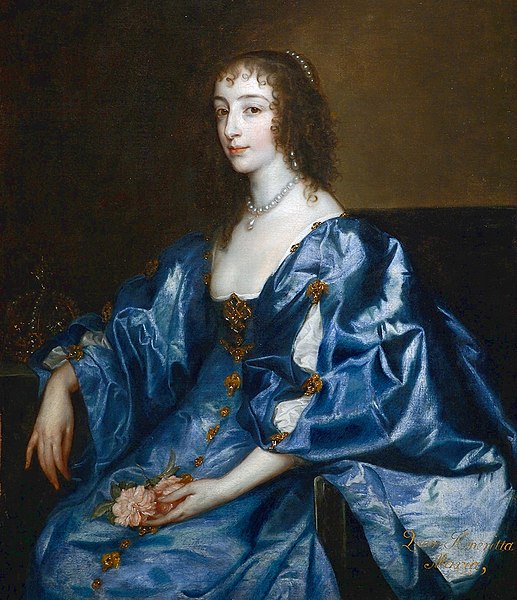 |
| Queen Henrietta Maria |
Henrietta
Maria blamed Rupert because her husband went to Gloucester with his army; she
believed Rupert was stopping Charles returning to London. Henrietta felt
isolated alone in her lodgings at Merton College, Oxford and was hurt by
her impeachment on 21st June. Like Rupert she was very unpopular,
not least for her religion, to which the queen hung as a lifeline. She saw it
as her duty as a good Catholic to try and save those around her; something
which had disastrous results.
A
poor influence on her husband Henrietta Maria was also vilified by the
Parliamentarian broadsides;
‘Who went to the
Brokers with the Jewels of the crown, and the cupboard of gold plate? Who
bought pocket-pistols, barrels of powder, and many such pretty toys to destroy
the Protestants Was it Queen Mary? The very same.’[v]
Gloucester
remained defiant and the siege was not lifted until early September when the
Royalists learned that the Earl of Essex was en route to relieve the town with
an army of 14,000. Rupert tried pressed an attack on the relief army at Stow-on-the-Wold, but was repulsed.
Essex
slipped into Gloucester and managed to persuade Charles that he intended to
return to London via Worcestershire. Charles obligingly moved his army to Evesham and Essex moved quickly over to Cirencester and retook the
town Rupert has taken earlier in the year. Essex then began his return journey
to London. Rupert caught up with the Parliamentarians at Aldbourne Chase[vi] but was beaten off.
Rupert’s troops sped to reach Newbury first and occupied the town.
Newbury and Beyond
 |
| Newbury and surrounding countryside |
Charles
brought up his army to Newbury and resolved to fight the next day; 20th
September. His optimism was reinforced by the arrival of fresh troops from
Oxford. The battle on the morrow resulted in a
conclusive victory for Essex, who was aided by the opposing side’s shortage of
ammunition[vii]. Rupert’s cavalry were
hampered by the hedges and hillocks around the site of the battle.
‘The Earl of Essex did break
both the head and the heart of the King’s Army at Newbury.’[viii]
Rupert had
opposed the fighting, knowing the problems his men faced and aware that Essex’s
men would make the most of the terrain. The battle was one of the turning
points of the war and Charles would never again be in a position to defeat the
opposition in the field and give himself a clear run on London.
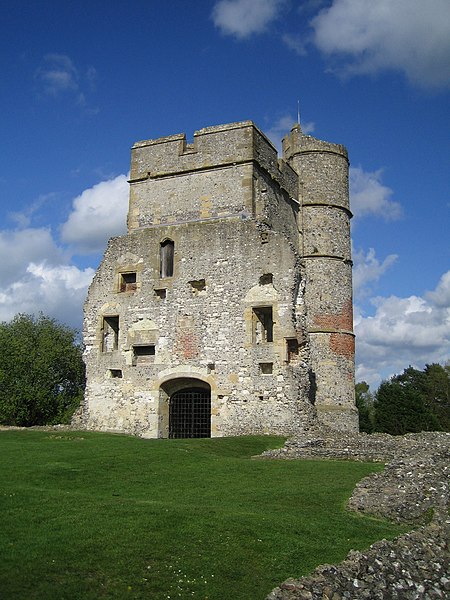 |
| Donnington Castle |
Charles lost
a number of good men in the fight including Caernarvon, Falkland[ix] and Sunderland. Essex’s
army moved off, marching towards London. Rupert and his men harassed the line
of march but were checked three miles from Newbury by Parliamentarian
musketeers.
Charles
ordered Rupert to garrison Donnington Castle, and then he and his nephew returned to Oxford. Ten
days later the indomitable Rupert was off to seize Bedford. En route he and his men took Newport Pagnell where Rupert placed Sir Lewis Dyve [x]in charge. At the end of
October, after a muddle over ammunition, Dyve withdrew from this key position
allowing Essex to occupy the town. Rupert now suggested an attack into East
Anglia which was shouted down by his enemies, as being high-risk, which it was
despite the pockets of Royalist support in the area.
Late in the
year Rupert’s brother, Charles Louis, visited London to pledge his support for
the Parliamentarians, who promptly reinstated his pension. The Protestant
supporters of the ousted Elector were unhappy that Rupert and Maurice were
fighting against the Puritan Parliament. Charles Louis himself strongly
believed that regaining the Palatinate was a duty that overrode his duty to his
uncle; Parliament believed that Charles Louis’ cause was a Protestant crusade.
Disaster Looms
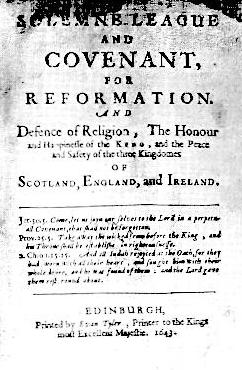 |
| Frontispiece Solemn League & Covenant |
In the late
autumn the Parliamentarians and the Scots came to an agreement, signing the Solemn League and Covenant. The Scots agreed to invade; to
counter this Charles decided to bring back his troops stationed in Ireland.
Rupert pushed to be given command of the influx of soldiers, chafing against
the intrigues in Oxford. One of his supporters wrote;
‘The army is much divided
and the Prince at true distance with many of the officers of the horse.’[xi]
The gulf
between Henrietta Maria and Rupert was widening, but Charles made Rupert a peer
on 23rd January 1644; Earl of Holderness and Duke of Cumberland. By this time the Scots had already invaded and the
Royalist army in the north was trounced by Sir Thomas Fairfax[xii]. Convinced that the north was to be
where the action was Rupert got himself made Commander of Chester, Lancaster,
Worcester, Salop and the northern counties of Wales.
Rupert set
off north on the 6th February where the Marquess of Newcastle’s army, east of the Pennines, was exposed to attack from the Scots and from a Parliamentarian
northern army. Rupert needed to provide cover for them as well as ensure the
safety of Oxford which was under constant pressure from Essex’s men. Rupert
spent much of the summer of 1644 riding between the two.
Parliament
decreed that Charles’ Irish troops were to be executed once captured. Thirteen
of Rupert’s men were hanged near Nantwich, classified as Irish
Papists although all of them were English. In retaliation Rupert executed
thirteen of the enemy, promising thereafter to kill two Parliamentarians for
every one of his men executed. His threat stopped further retaliation.
In Oxford the
anti-Rupert cabal of Digby, Wilmot and Percy was joined by Sir John Culpeper; they increasingly had the ear of the
king, despite their joint lack of military expertise. Rupert’s relief of Newark[xiii] was a counter to their whisperings.
Newcastle wanted Rupert to remain in the northern Midlands, but the exigencies
of war required him to recruit in the Welsh Marches. In his absence Lincolnshire was taken and Lord Bellasis’ army was defeated at Selby.
Bibliography
Prince
Rupert of the Rhine – Maurice Ashley, Purnell Book Services Ltd 1976
The English
Civil War – Robert Ashton, Weidenfeld & Nicholson 1989
Charles the
First – John Bowles, Weidenfeld & Nicholson 197529th.
The Diaries
of Lady Anne Clifford – DJH Clifford (ed), Alan Sutton Publishing Ltd 1990
Charles I –
Christopher Hibbert, Penguin Books 2001
The Grand
Quarrel – Roger Hudson (ed), Folio Society 1993
The Civil
Wars of England – John Kenyon, George Weidenfeld & Nicholson 1989
Prince
Rupert of the Rhine – Patrick Morrah, Constable & Company 1976
The English
Civil War – Diane Purkiss, Harper Perennial 2007
Prince
Rupert – Charles Spencer, Phoenix Paperback 2008
[ii]
There is no evidence that the relationship was anything other than platonic
[iii]
Prince Rupert - Spencer
[iv]
Later to change sides and fight for Charles II
[v]
The English Civil War - Purkiss
[vi]
Near Swindon
[vii]
Ammunition could have been fetched from Oxford but Charles was not prepared to
delay
[viii]
Prince Rupert - Spencer
[ix]
One of Charles’ two Secretaries of State, Falkland was fighting in a conflict
he abhorred; he was replaced by Rupert’s enemy Lord Digby
[x]
One of Lord Digby’s stepbrothers
[xi]
Prince Rupert - Spencer
[xiii]
A staging post between Newcastle’s army and Oxford
No comments:
Post a Comment
Note: only a member of this blog may post a comment.